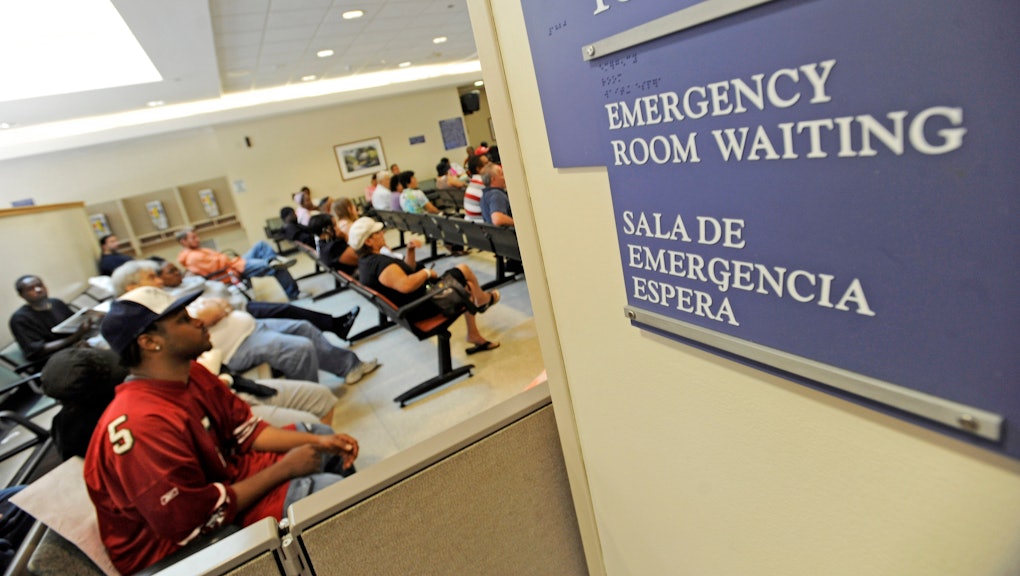- United Healthcare Emergency Room Copays
- Florida Blue Emergency Room Copay
- Medicare Emergency Room Copay
According to the report, “Emergency room facility fees are coded on a scale of 1 to 5, reflecting the complexity of care delivered and the amount of resources the ER devoted to the patient. Ovation applause serial numbers. Editor’s note: For specific coverage relating to hearing aids and/or hearing care, please see the $0 copays and Vision and Hearing sections below. UnitedHealthcare announced the launch of its 2021 Medicare Advantage and prescription drug plans, showcasing “affordable coverage, exclusive benefits, expanded plan access, and a simplified member experience that connects people to quality care.
Original Medicare is a federal health insurance program for seniors and people with certain disabilities. When a Medicare recipient requires emergency care, Medicare does cover emergency room visits for the most part, and the recipient pays a copayment.
Read on to learn more about emergency room costs and how a Medicare Supplement Insurance plan can help reduce what you pay out of pocket for Medicare emergency room coverage.
What is the Copay for Medicare Emergency Room Coverage?
A copay is the fixed amount that you pay for covered health services after your deductible is met. In most cases, a copay is required for doctor’s visits, hospital outpatient visits, doctor’s and hospital outpatients services, and prescription drugs. Medicare copays differ from coinsurance in that they're usually a specific amount, rather than a percentage of the total cost of your care.

Medicare does cover emergency room visits. You'll pay a Medicare emergency room copay for the visit itself and a copay for each hospital service. It is important to remember, however, that your actual Medicare urgent care copay amount can vary widely, depending on the services you require and where you receive care.
If you are admitted for inpatient hospital services after an emergency room visit, Medicare Part A does help cover costs for your hospital stay. Medicare Part A does not cover emergency room visits that don't result in admission for an inpatient hospital stay.
What Does Medicare Pay for Emergency Room Visits?
Medicare Part A emergency room coverage is specifically for inpatient hospital stays. If your emergency room visit requires you to be admitted for inpatient care, your Medicare Part A benefits would kick in but are subject to the Part A deductible and coinsurance. Amazon magnets.
Most ER services are considered hospital outpatient services, which are covered by Medicare Part B.They include, but are not limited to:
- Emergency and observation services, including overnight stays in a hospital
- Diagnostic and laboratory tests
- X-rays and other radiology services
- Some medically necessary surgical procedures
- Medical supplies and equipment, like splints, crutches and casts
- Preventive and screening services
- Certain drugs that you wouldn't administer yourself
NOTE: There's an important distinction to be made between inpatient and outpatient hospital statuses. Your hospital status affects how much you pay for services. Unless your doctor has written an order to admit you as an inpatient, you're an outpatient, even if you spend the night in the hospital.
How Medicare Part B Pays For Outpatient Services
Medicare Part B pays for outpatient services like the ones listed above, under the Outpatient Prospective Payment System (OPPS). The OPPSpays hospitals a set amount of money (or payment rate) for the services they provide to Medicare beneficiaries.
The payment rate varies from hospital to hospital based on the costs associated with providing services in that area, and are adjusted for geographic wage variations.
Other Medicare Costs
Aside from Medicare ER copays, there are other outpatient hospital costs that you should be aware of when visiting the emergency room, such as deductibles and coinsurance. In most cases, if you receive care in a hospital emergency department and are covered by Medicare Part B, you'll also be responsible for:
- An annual Part B deductible of $203 (in 2021).
- A coinsurance payment of 20% of the Medicare-approved amount for most doctor’s services and medical equipment.
How You Pay For Outpatient Services
In order for your Medicare Part B coverage to kick in, you must pay the yearly Part B deductible. Once your deductible is met, Medicare pays its share and you pay yours in the form of a copay or coinsurance.
Get Help Covering Your Emergency Room Copay
If you're worried about a trip to the emergency room adding expensive and unpredictable costs to your health care budget, consider joining a Medicare Supplement Insurance (or Medigap) Plan. Medigap is private health insurance that Medicare beneficiaries can buy to cover costs that Medicare doesn't, including some copays. All Medigap plans cover at least a percentage of your Medicare Part B coinsurance or ER copay costs.
To find a Medigap plan in your area, call 1-800-995-4219 to connect with a licensed insurance agent.
United Healthcare Emergency Room Copays
Does Medicare Part A cover emergency room visits?
If you opted out of Medicare Part B, and only have Part A, you may be wondering if you can get coverage for an emergency room visit. Medicare Part A is designed for hospital insurance, meaning that it's benefits are generally used once admitted to the hospital.
Resource Center
Enter your email address and get a free guide to Medicare and Medicare Supplement Insurance.
By clicking 'Sign up now' you are agreeing to receive emails from MedicareSupplement.com.
Florida Blue Emergency Room Copay
We've been helping people find their perfect Medicare plan for over 10 years.
Medicare Emergency Room Copay
Ready to find your plan?




